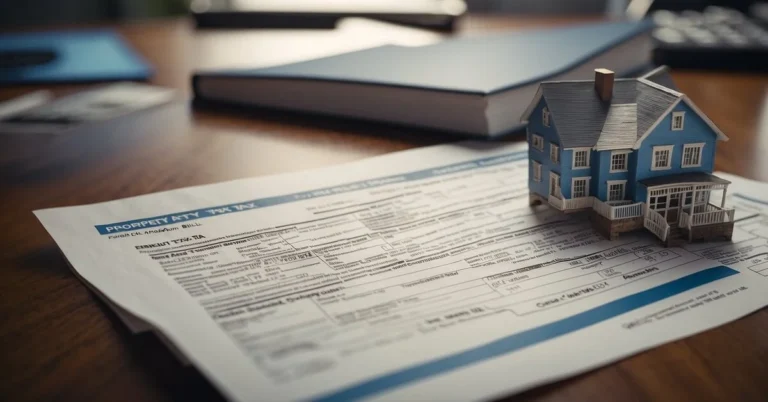Benefits of Regular Budgeting for Young Adults
As a young adult, managing money can be a daunting task, but regular budgeting can make it so much simpler. You see, a budget is not just a plan for where your money will go; it’s a reflection of your priorities and goals. Through budgeting methods like the 50/30/20 rule or zero-based budgeting, I’ve found it easier to allocate funds responsibly.
- 50/30/20 Budget: This rule has helped me split my income into three parts: 50% for needs, 30% for wants, and 20% for savings or debt repayment. It’s a clear, straightforward approach that ensures I’m covering my essentials while still enjoying life and preparing for the future.
- Zero-Based Budgeting: Every dollar gets a role in this method, whether it’s spending or saving. By planning my expenditures to the last cent, I make sure there’s no wasteful spending. Every month ends with a balance of zero, but that just means every penny has been thoughtfully accounted for.
Regular budgeting leads to better financial habits, and over time, I’ve learned to prioritize my spending. Instead of impulse buying, I plan my expenses, which ultimately affords me more financial freedom. It also helps me to build up an emergency fund—life is unpredictable, and knowing I have a financial cushion gives me peace of mind.
And it’s not just about cutting costs but rather making informed choices. Whether you’re a fan of spreadsheets or prefer a budgeting app, starting and sticking to a budget can guide you toward financial stability, reduce stress about money, and allow you to achieve your personal goals. For me, regular budgeting is a hack to live within my means while still planning for a bright future.
Creative and Enjoyable Budgeting Methods

I know that budgeting can often seem like a chore, but it doesn’t have to be a mundane task. By incorporating some creative budgeting methods, I can keep myself engaged and excited about managing my finances. Let’s explore a few approaches that balance the practical aspects of handling money with a dash of fun.
Proportional Budgets
I find that proportional budgets are empowering. This method involves allocating percentages of my net income to various categories such as needs, wants, and savings. For instance, a popular formula is the 50/30/20 rule, where I allocate 50% of my income to needs, 30% to wants, and 20% to savings. By following this structure, it becomes straightforward for me to ensure that my expenses are always in sync with my financial goals.
- 50% Needs: Rent, utilities, and groceries
- 30% Wants: Dining out, hobbies, and subscriptions
- 20% Savings: Emergency fund, retirement, and other financial goals
Pay Yourself First Model
With the “Pay Yourself First” model, I make saving for my financial independence a top priority. As soon as I receive my paycheck, I immediately set aside a portion of my income into a savings account. Whether it’s for an emergency fund or a future investment, treating my savings like a non-negotiable bill ensures I always contribute to my financial goals.
- Savings Account: Immediately set aside 20%
- Living Expenses: Use the remaining 80% for other expenses
Envelope Budgeting
“Envelope Budgeting” turns managing my budget into a tangible and practical exercise. I allocate cash to different envelopes based on my budget categories each month. For example, one envelope for groceries, one for entertainment, and one for dining out. Once an envelope is empty, I must display self-control and wait until the next cycle before I can spend in that category again.
- Groceries: $250
- Entertainment: $100
- Dining Out: $150
Each of these methods is a tool I use to transform personal finance from a tedious process into an enriching part of my life that helps me aim toward financial independence. By applying creativity and a touch of enjoyment, budgeting becomes less about numbers and more about achieving a bright financial future as a young adult.
Tools and Resources for Budget Management

In my journey to financial literacy, I’ve found that effective budget management hinges on utilizing the right tools and resources. Whether you’re a spreadsheet aficionado or prefer the convenience of an app, there’s something out there to fit your style.
Using Spreadsheets for Budgeting
I love the flexibility that spreadsheets offer for budgeting. You can customize everything exactly to your needs, from simple lists of expenses and income to detailed projections and charts. Google Sheets or Microsoft Excel are fantastic for this, especially since they have built-in templates that you can adapt. Moreover, I’ve discovered that you can access free teen budget worksheets online, which are perfect for young adults starting with budgeting.
Leveraging Budgeting and Finance Apps
When it comes to budgeting with technology, I can’t ignore the surge of personal finance apps that make managing money almost seamless. Apps like Mint help track spending, categorize expenses, and set budgets in real-time, which is invaluable for staying on top of my finances. These apps offer the convenience of managing your finances right from your phone, often integrating learning tools to grow your financial knowledge along the way.
Expense Tracking and Money Management
I’ve found that keeping track of expenses and managing money wisely is like laying the foundation for a solid financial future. It’s crucial because it helps me understand where my money is going and how I can control it better.
Categorizing and Reviewing Expenses
When I track my expenses, I make sure to categorize them. This way, I can see how much I’m spending in different areas of my life. For me, a simple table format works best to visualize the expense categories:
| Category | Description | Monthly Amount |
|---|---|---|
| Housing | Rent/mortgage, utilities | $XXX |
| Food | Groceries, dining out | $XXX |
| Transportation | Fuel, maintenance | $XXX |
| Entertainment | Movies, subscriptions | $XXX |
| Gym Membership | Health and Fitness | $XXX |
| Miscellaneous | Variable expenses | $XXX |
After listing the expenses, I review them at the end of each month. This helps me spot patterns, like if my spending on entertainment or food is increasing. If I notice a spike in variable expenses, I reassess my needs versus wants to keep things balanced.
Developing Healthy Spending Habits
Developing healthy spending habits starts with self-control. I learned the hard way that merely spotting a great deal on a night out or a fancy gym membership doesn’t mean I should spend the money. I’ve created some personal money management tips for myself:
- Budget for Fun: I allot a certain amount for fun activities, ensuring I enjoy life without guilt or financial stress.
- Delay Impulse Buys: When I feel the urge to make an unplanned purchase, I wait a couple of days. If I still believe it’s necessary, I consider if it fits into my budget.
- Track Regularly: I make it a habit to track my expenses weekly using a budgeting app, so I’m always aware of my financial status.
By breaking down my expenses into categories and consciously cultivating sensible spending habits, I’ve learned to manage money in a way that aligns with my financial goals. Remember, consistent tracking and evaluating of where your money goes can empower you to make smarter financial decisions.
Avoiding Common Budgeting Mistakes

When it comes to managing my finances, steering clear of common pitfalls has helped me maintain a healthy budget. Below, I’ve outlined some mistakes to avoid:
- Lacking Discipline: It’s tempting to splurge, but impulsive buying can quickly derail a budget. I practice self-control and think twice before making a purchase.
- Mixing Funds: Keeping my savings and checking accounts separate ensures that I don’t dip into funds reserved for future needs or emergencies.
- Forgetting to Plan for Emergencies: I always allocate part of my income to an emergency fund. This way, unexpected expenses don’t knock my finances off track.
To avoid these mistakes, here’s a simple strategy I follow:
- Create Clear Goals: Knowing what I’m saving for, like a new car or a vacation, motivates me to stick to my budget.
- Track Spending: Regularly checking my expenses helps me notice patterns and adjust if I’m overspending.
- Review and Adjust: Life changes, and so should my budget. I regularly assess my financial goals and adjust my budget accordingly.
Frequently Asked Questions
How can I create a budget that works for my lifestyle as a young adult?
Creating a budget starts with understanding my income and expenses. I usually track my spending to see where my money goes, categorize my expenses, and then set spending limits for each category to align with my financial goals. Tools like personal finance apps can be quite helpful in this process.
How should you budget in your 20s?
In my 20s, budgeting is about establishing good money habits. I prioritize my financial goals, create a savings plan, and make sure to live within my means. It’s important to balance enjoying life now while also saving for my future. Learning to manage spending responsibly is key.
What is the 50-30-20 rule?
The 50-30-20 rule is a simple framework to manage my finances. According to this rule, I allocate 50% of my net income to necessities like rent and groceries, 30% to wants, such as dining out and entertainment, and 20% to savings or paying off debt. This budgeting guideline helps me ensure that I’m covering my essential expenses while also saving for the future.
How much money should I have at 25?
While there’s no one-size-fits-all answer, a common suggestion is to aim to have about six months’ worth of expenses saved in an emergency fund by the time I am 25. This can give me a financial cushion and allow me to manage unexpected costs without going into debt. Additionally, it’s smart to begin investing early to take advantage of compound interest over time
Please let me know in the comments, if the article helped or motivated you start budgeting as a young adult!






